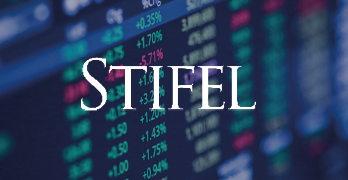BAI Index: In a Structurally Supply-Constrained Environment, There Are Two Quick Fixes to Elevated Pricing: Time or Significant Demand Pullback

An apposite quotation by Vladimir Ilyich Lenin reads, “There are decades where nothing happens; and there are weeks where decades happen”, with the latter case seemingly transpiring over the past several weeks. In the last installment, as Russia had just commenced its invasion of Ukraine, we commented that the impact was likely to be inflationary to air cargo pricing, but that the possibility of a longer term demand shock was coming more into focus.
Looking at what has transpired with air cargo pricing so far, though, we have not necessarily seen the degree of sequential price inflation that we would have expected, at least on the lanes that we track.
Looking at what has transpired with air cargo pricing so far, though, we have not necessarily seen the degree of sequential price inflation that we would have expected, at least on the lanes that we track. For example, on the Asia-to-Europe side, rates this week grew sequentially by 3% out of Hong Kong (BAI31) and fell 2% out of Shanghai (BAI81). Meanwhile, Hong Kong to Europe was down 12% in March compared with February, which compares to the pre-pandemic norm of flattish rate development, and Shanghai to Europe was up 25% in March over February versus the pre-pandemic norm of flattish to slightly down in terms of USD per kilo.
With multiple economic, geopolitical, and continued epidemiological variables at play, it is challenging to make a call on the direction of pricing, other than to say it will be highly volatile for the foreseeable future.
An explanation for the lack of clear pricing signals from the Ukraine conflict is likely due to the fact that these headline shocks are not the only variable at play right now. Notably, China and Hong Kong are experiencing significant Covid-related disruptions to trucking, ramp, and production capacity, which are affecting downstream demand for modes like air cargo. With multiple economic, geopolitical, and continued epidemiological variables at play, it is challenging to make a call on the direction of pricing, other than to say it will be highly volatile for the foreseeable future.
All that said, we believe that what defines this freight cycle from most previous freight cycles is that it is heavily supply driven, as opposed to demand driven. With significant supply chain bottlenecks across virtually every mode of transportation and logistics – from production, through overland, through international, through hinterland, through overland, to receiver – we believe it is difficult to conceive of a catalyst for cycle unwinding apart from either time or a significant demand pullback.
So while we see structural reasons why air cargo supply will remain tight for the duration of this year, and potentially 2023 and beyond, significant demand uncertainty may produce volatile swings.
As we spoke about last month, long-term demand risks continue to mount. Inflation is weighing on economic growth on a global scale, global energy prices are rising to threaten discretionary spending, worldwide food shortages may result from disruptions to Ukrainian grain and Russian fertiliser supply, and the collateral effects of broad economic sanctions threaten economic growth. So while we see structural reasons why air cargo supply will remain tight for the duration of this year, and potentially 2023 and beyond, significant demand uncertainty may produce volatile swings.
To synthesize, our thesis remains largely the same: armed conflict in Ukraine will continue to put upward pressure on air cargo pricing in the near term by limiting capacity. Other events and developments like Covid-19 resurgence may push near-term demand lower temporarily, but ultimately produce volatility as Chinese production and operations snap back. Further outbreaks in major consumption geographies could also swing pricing and capacity further. The events of the past few years suggest it is wise to consider as many angles as possible. But through it all, we believe it is important to remember that, despite micro swings in the market, a cataclysmic world event brought us into the current situation. We can talk about sequential, month-over-month, week-over-week, or year-over-year changes in the data. But on a multi-year scale, current pricing is still multiples of pre-pandemic levels: 2.5× higher on Shanghai to Europe, 2.7× higher on Shanghai to North America, 2× higher on Hong Kong to Europe, and 2.3× higher on Hong Kong to North America. With no quick fix on the supply side, we believe we will need to see an equally cataclysmic shift in demand to the downside to see a rapid return prior levels.
About Bruce Chan, Director & Senior Analyst, Global Logistics & Future Mobility Equity Research, Stifel
Bruce Chan joined Stifel in 2010 and is based out of the Miami office.
Bruce Chan can be reached at chanb@stifel.com. Opinions expressed are subject to change without notice and do not take into account the particular investment objectives, financial situation or needs of individual investors. For more information and current disclosures for the companies discussed herein, please go to the research page at www.stifel.com.
©2021 by J. Bruce Chan.